PICC Line - Children
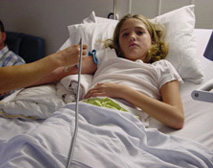
What is a PICC line?
A PICC line (Peripherally Inserted Central Catheter) is a special IV that helps give your body medicine. IV stands for intravenous, which means “within a vein.” It is a tiny tube that is placed in your vein and is a way for you to get medications or fluids. PICC lines last longer than IVs and are usually placed in your arm above the elbow. You will be able to move your arm and play, plus you won’t have any more pokes from getting new IVs. Sometimes kids even get to go home with their PICC lines.How do I get my PICC line?
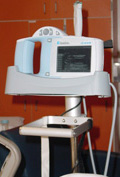 When your doctor says you need a PICC line, a special PICC line nurse will come and meet you in your room.
The first thing they will do is look at your arm to find just the perfect spot for your new PICC line.
When your doctor says you need a PICC line, a special PICC line nurse will come and meet you in your room.
The first thing they will do is look at your arm to find just the perfect spot for your new PICC line.
They will put a tourniquet on your arm, which helps the nurse see your veins. A tourniquet feels like a tight squeeze or hug on your arm.
The nurse will then put a cold gel on your arm and use an Ultrasound machine to see the veins inside your arm. The part that touches your arm has a rounded end and does not hurt.
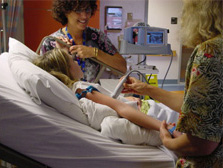
You can see a picture of your veins on the screen of the Ultrasound machine if you want. After they find just the right spot, the nurse will mark the spot on your arm with a marker.
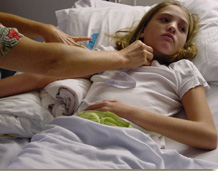 Then they will measure your arm and chest so your PICC line is the perfect size just for you.
Then they will measure your arm and chest so your PICC line is the perfect size just for you.How is my PICC line placed?
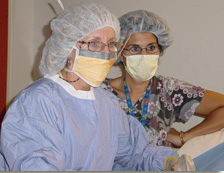 When its time to have your PICC line placed, your nurse will either take you to a treatment room, or if you don't have a roommate, you can stay in your room. If you would like, a parent or a Child Life specialist can go with you.
Getting a PICC line is a sterile procedure. This means everything has to be really clean. Everyone in the room, except you, will be wearing a mask, and your nurse will be wearing a gown and gloves. Your job is to hold really still and keep your arm straight.
Next, they will clean your arm with alcohol. It may feel a little cold, but it won't hurt. Then, they will put the tourniquet back on your arm. Remember, this is just a tight squeeze on your arm.
When its time to have your PICC line placed, your nurse will either take you to a treatment room, or if you don't have a roommate, you can stay in your room. If you would like, a parent or a Child Life specialist can go with you.
Getting a PICC line is a sterile procedure. This means everything has to be really clean. Everyone in the room, except you, will be wearing a mask, and your nurse will be wearing a gown and gloves. Your job is to hold really still and keep your arm straight.
Next, they will clean your arm with alcohol. It may feel a little cold, but it won't hurt. Then, they will put the tourniquet back on your arm. Remember, this is just a tight squeeze on your arm.
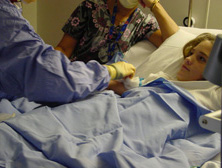 Then, the nurse will put more gel on your arm, so they can look at your veins with the Ultrasound machine while placing your PICC line. The gel maybe a little cold, but it won’t hurt.
Then, the nurse will put more gel on your arm, so they can look at your veins with the Ultrasound machine while placing your PICC line. The gel maybe a little cold, but it won’t hurt.
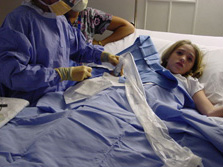 Next, your nurse will give a special numbing medication called Lidocaine. This medicine is a quick stick that may sting for about five seconds, but it will help you not feel the poke when your PICC is placed. Sometimes kids say that counting to six or seven makes the sting go away faster.
Now it is time for you to have your PICC line placed. Similar to an IV placement, once it is placed in your vein the needle comes out, and only the small tube stays in your arm.
Next, your nurse will give a special numbing medication called Lidocaine. This medicine is a quick stick that may sting for about five seconds, but it will help you not feel the poke when your PICC is placed. Sometimes kids say that counting to six or seven makes the sting go away faster.
Now it is time for you to have your PICC line placed. Similar to an IV placement, once it is placed in your vein the needle comes out, and only the small tube stays in your arm.
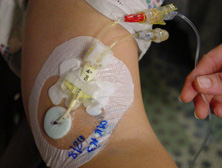 After you have your PICC line, the nurse will clean your arm with alcohol, which may be a little cold. Then they will put tape on your arm, this is called a dressing, to make sure your new PICC line stays clean.
After you have your PICC line, the nurse will clean your arm with alcohol, which may be a little cold. Then they will put tape on your arm, this is called a dressing, to make sure your new PICC line stays clean.
